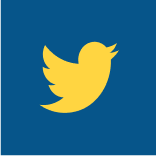With summer underway, the sea ice in Canada’s Hudson Bay is melting rapidly, transforming it from a solid hunting platform for polar bears to open water. This annual pattern forces polar bears to land and marks the beginning of their fasting period, as their main prey, seals, become inaccessible to them until the bay freezes over again in winter.
Updated: July 14
Sea ice has now almost completely disappeared from Hudson Bay. It’s not record-setting this year, but it’s still on the early side. We generally calculate the time bears spend on land from the date when 30% of sea ice in the bay is left. By that metric, Western and Southern Hudson Bay saw their 4th and 9th earliest sea ice break-up in 47 years of satellite data.
However, we're seeing several polar bears hanging on to very small patches of sea ice east of Wapusk National Park until as late as July 9.
While this behavior isn’t new, until now researchers haven’t fully understood why bears choose to stay on such marginal ice, and how many do so. A new multi-partner project led by the Mushkegowuk Council in Ontario and including support from PBI will help us understand for the first time what’s happening as the ice melts. For example, do they need a minimum thickness or concentration of ice to support their weight and allow them to hunt successfully? Understanding how polar bears use these shrinking patches of ice will help us understand how they might adapt to changing sea ice conditions.




















